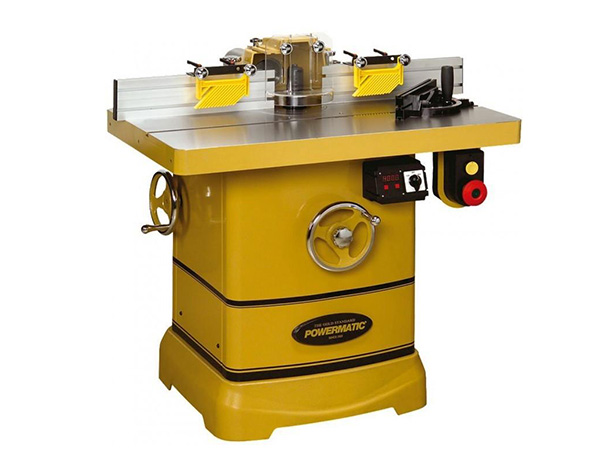
Following up on your answers to the question of adding a jointer to the shop, would a shaper be more useful for the new woodworker? It offers both the ability to establish a flat reference surface as well as many operations of the router. I am still trying to decide which would be more useful in my shop.
Ellis Walentine: A shaper is definitely not a basic shop machine, and you shouldn’t consider buying one unless you already own a jointer, planer, and table saw.
Michael Dresdner: The most useful tool is the one you use the most. Speaking for myself, I always found shapers to be a highly valuable and versatile tool, but also one of the more dangerous in the shop. It requires more care and a longer learning curve than other tools, such as a jointer or a router, and depending on what you plan to do with it, may also demand the ability to make jigs and fixtures to ensure its versatility. Because of the inherent danger, I only allowed experienced employees on the shaper, and then it typically scared the bejeezus out of them. And on top of all that, there are some things jointers and routers will do that a shaper will not.
Given the situation, I think you would probably be better off delaying the purchase of a shaper until it is clear to you that you need one (meaning the tools you have will not do the jobs you need done, or at least not cost effectively), and you are sure you know what is involved in using one. I can’t imagine regretting the purchase of a jointer or a router, even if you add a shaper later on.
Lee Grindinger: A shaper is not well suited to straightening an edge, and it will not flatten a twisted board. To straighten either the edge or the face of a board, the tables of a jointer are precisely machined to be on the same plane; however, while remaining on this plane one table can be offset. The amount the table is offset determines the depth of cut. This is what makes a jointer work. To accomplish this same level of accuracy with the fences of a shaper will require an extensive setup. Most shaper fences, especially in the lower cost ranges, are simply not machined to attain the accuracy needed to straighten the edges of lumber. A shaper’s best use is molding edges. A router is more versatile than a shaper because it can be placed in a table or operated in the hand. The number of cutters available for a router is remarkable, and router cutters are generally cheaper than cutters for a shaper. For molding edges a router is your first best choice for a small shop. Shapers find their way into shops when power and speed is needed, generally in a production setting. While a well-equipped shop will have a shaper, it will not replace either a jointer or a router. Sorry, a shaper is not your magic bullet. There are ripping jigs for table saws that would do a much better job of straightening edges.







